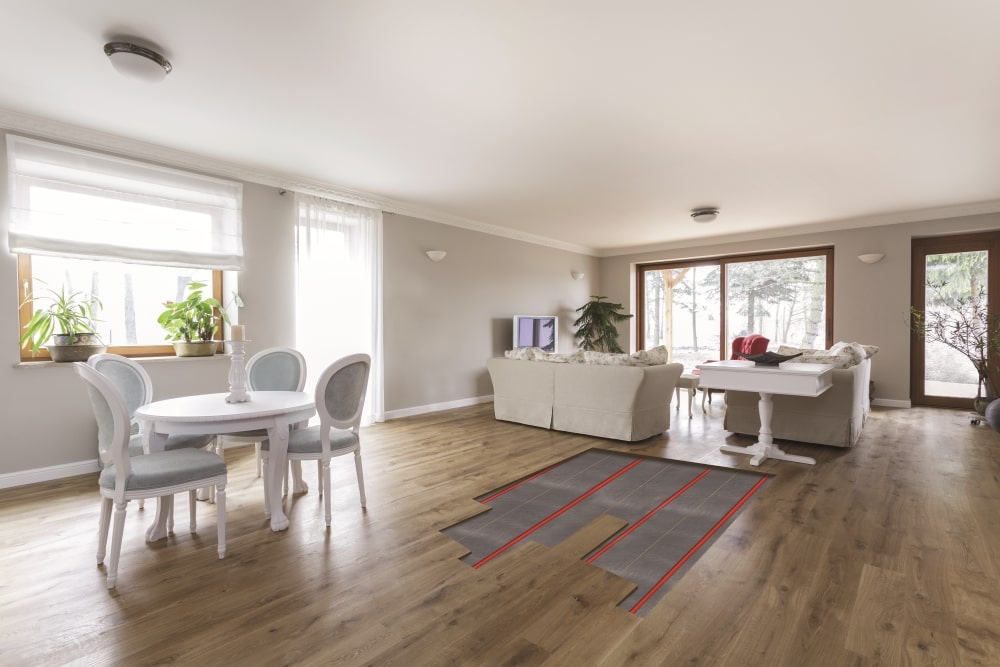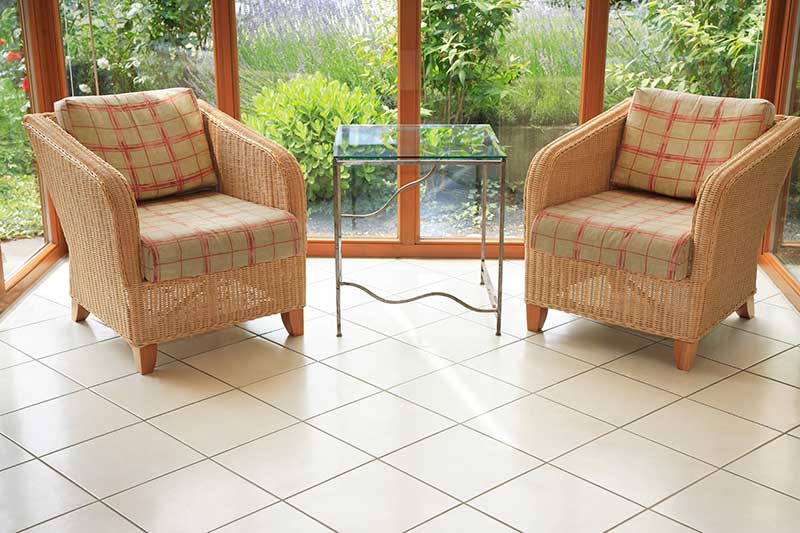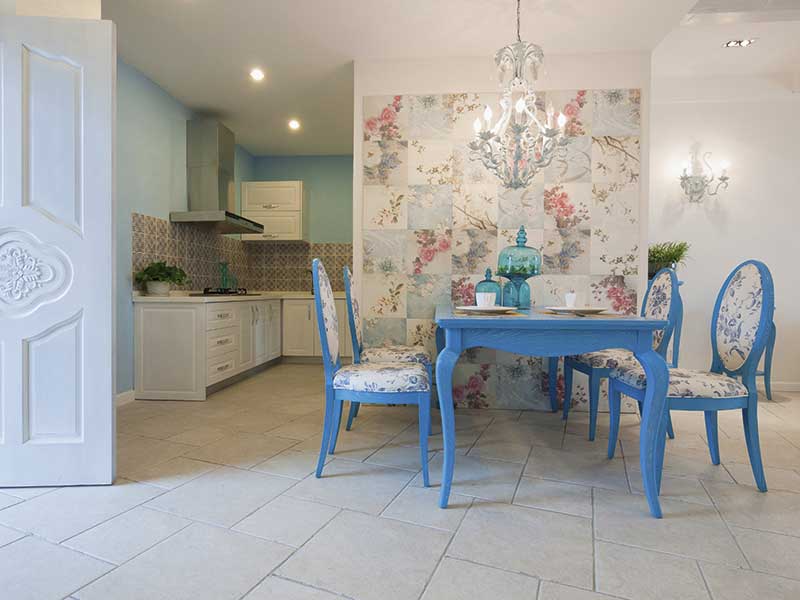Underfloor heating is becoming increasingly popular as informed homeowners see the advantages of a heating system that blends the warmth of balanced radiant heat with the efficiency of computer-controlled zone thermostats. Installing an electric radiant heat system beneath your floor provides warmth and comfort without eliminating valuable living area.
5 Advantages of Underfloor, Radiant Heating
1. No Maintenance
Electric radiant heating systems are maintenance-free. Properly installed, they silently provide heat when needed, without the use of mechanical help like fans, motors, and pumps. Unlike HVAC systems, underfloor heating never requires the use of filters.
2. Discreet, Low-Profile Style
Remodeling is the perfect time to upgrade your heat source, and a low-profile underfloor system takes up very little headroom, generally less than an inch, and is out of sight.
3. More Efficient than Alternatives
Supplemental heat is often provided by adding ductwork to a conventional HVAC unit which generally reduces the efficiency of the system unless it is resized to handle the new load. Other methods of heating include wall units, electric baseboards, or space heaters. These options are expensive to operate and provide unbalanced heat in the room, overheating the air at the source while creating cool spots in other areas.
4. Compatible with Smart Thermostats
Electric radiant floor heating combined with a smart thermostat allows you to create individual zones throughout your home that can be heated when needed. Instead of heating the entire house just to warm up the bathroom or kitchen, a Smart thermostat will heat those areas when they are being utilized and allow the system to run at a more efficient level until needed again. This reduces your utility bills and extends the life of your entire heating system.
5. Water Systems Require Maintenance
There are two types of underfloor heating systems: electric and hydronic. Hydronic systems use water as the heating medium and it needs to be pushed through the pipes from the boiler to the area to be heated. The water is moved by pumps and the pumps can break down, requiring maintenance and replacement.
Types of Systems
Water Systems
Underfloor radiant heating systems use water or electricity to provide heat. Water systems can use a boiler, solar, geothermal, or heat pumps as the source for hot water, and the water is pumped throughout the home to heat the individual rooms.
Water is a good medium to move heat from one area to another, but there are some negative aspects to be considered:
- Heat loss – The further the water travels, the more heat it loses, so rooms at the end of the run will take longer to come to temperature than those near the source.
- Increased complexity in installation – The entire system is mechanical, meaning every connection is a possible point of failure.
- Must have a dedicated space in the home – regardless of the source of heat, a permanent space will need to be dedicated to house part of the system.
Electric Underfloor Heating Mat
The underfloor heating mat is a great system for standard-sized rooms that are square or rectangular. The mats are available in 20” and 36” widths and are all ⅛” thick. They can be easily rolled out for installation.
They are compatible with all types of flooring and have a self-adhesive backing. The electric heating wire is already attached, reducing installation time by up to 35%. Depending upon the finished floor material, self-leveling compound or flexible tile adhesive may be required.
Foil Heater
Foil heating systems are designed for large areas that will be covered with floating floors such as engineered wood, laminate, and carpet. 1/4″ thick insulation is recommended if you aren’t using carpet, carpet padding can substitute when using carpet. The aluminum foil covering evenly spreads the heat and is simple to install.
Since the foil is installed directly below the flooring, no leveling compound is needed. However, an insulated underlay is recommended to increase the efficiency of the foil mat, especially on a concrete slab. The underlay directs the heat to the finished floor and reduces the amount lost to the slab. This system is to be used in dry rooms only.
Inslab Cable
The Inslab cable system is designed specifically for heating concrete floors, and the heating cables are installed in the concrete slab, not on top of it. Inslab cable requires a minimum of a 2” pour.
If you are remodeling and cannot lose more than an inch of height, you should consider one of the other methods mentioned here. Due to the extended heat times required for inslab installations, this system is recommended for rooms that require a constant temperature.
Membrane and Cable
Floors move as they heat up and cool down and this movement can cause cracks in some floor finishes – especially tile. The membrane and cable system combines a self-adhesive membrane that “uncouples” the subfloor from the finished flooring allowing small movements of the subfloor without adversely affecting the tile. The membrane is designed in such a way that the adhesive layer contracts and expands with the subfloor without transferring that movement to the surface, thereby protecting both the heating cable and the finished tile flooring. The membrane system is ¼” thick and the cable fits within it.
The Best Solution
Every building project will have design criteria that will be better suited to one method of heating or another.
Warmup has developed low-profile underfloor electric heating products that can meet the demands of both the remodeler and professional contractor. Our systems are made for providing supplemental heat for a room or two, and can just as easily be designed as a stand-alone heating system for the entire home.
Contact us today for a quote on your project.









